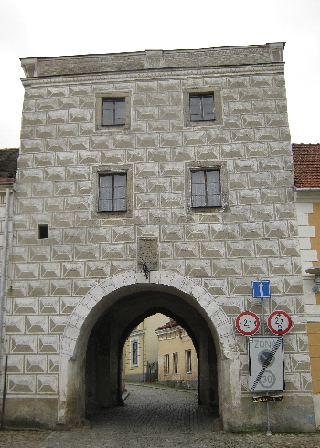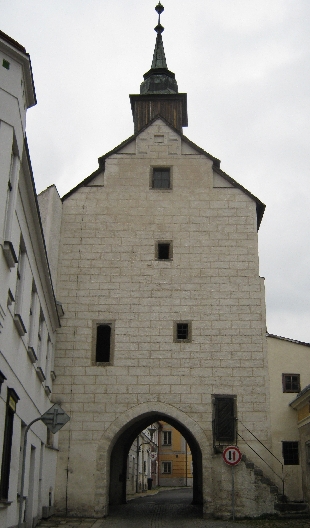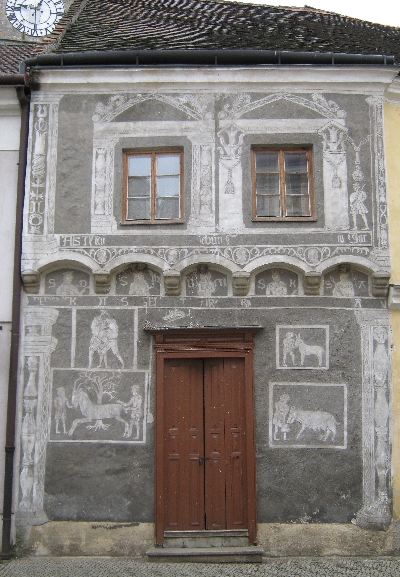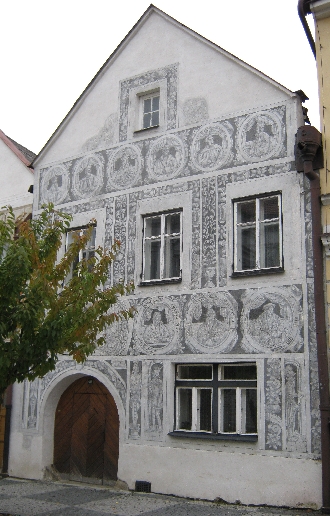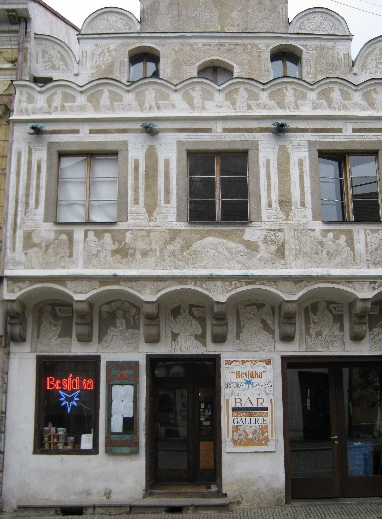
Less than 30 km south of Telc lies the little town of Slavonice. On the morning of Thursday 7th October, we drove from Telc to Slavonice, stopping off to briefly explore the intervening town of Decice en-route.
Slavonice has some of the best examples of buildings with sgraffito decoration in the whole of the Czech Republic. The reason that so many of these architectural gems have survived is because of the town’s somewhat unfortunate history. A prosperous town in the latter part of the sixteenth century from which period, many of the town’s historic buildings date, it lost much of its prosperity during the Thirty Years War (1618-1648) and suffered a further economic downturn when the main road between Prague and Vienna was re-routed in the eighteenth century.
In the twentieth century, two further events had a dramatic effect on Slavonice. At the end of the Second World War in 1945, most of the minority German-speaking population of Czechoslovakia, the Sudeten Deutsche, were expelled. This included the majority of the population of Slavonice. Less than three years later, following the coup that brought the Communist Party to power in February 1948, because the town lies less than 2 km from the Austrian border, it was made part of a restricted zone which was off limits for most of the Czechoslovak population, for fear that they might try to escape from their Communist ‘paradise’.
It is ironic that, a combination of economic degradation followed by a period of social isolation, has maintained so much of Slavonice’s architectural heritage. Fortunately, since the Velvet Revolution of 1989, a considerable effort has been made to both restore and preserve it.
One of the many restored buildings with sgraffito decoration is now the Bar-Restaurant Besídka. We ate lunch here soon after our arrival and enjoyed the English version of the menu which has several humorous items on it and a total absence of Czenglish. Clearly it had been translated by someone who had a very good understanding of the English language rather than using ‘Google translate’. The food was very good too! The interior walls are used to display a fascinating collection of pictures and other artwork and it is worth stepping inside Besídka just to see these.
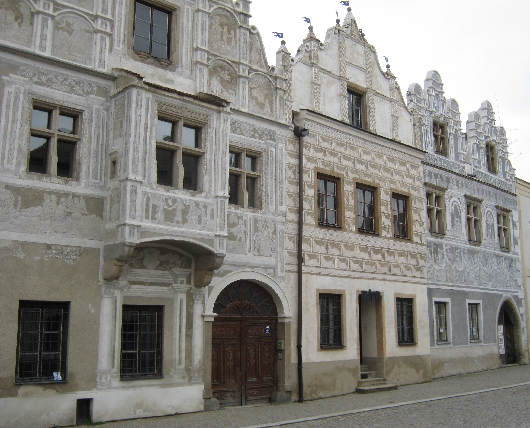
A few doors along from Besídka, we saw a sign on the large wooden doors of Ubytování Eva Giordanová declaring Zimmer frei. So we went in, climbed the stairs to the first floor office and enquired about their rooms. We were shown a very attractive room with simple kitchen facilities adjacent, all for a very reasonable price. I was also able to move the car from the main square and park it securely in the yard at the rear of the building.
Not only does Ubytování Eva Giordanová have accommodation, it also houses a museum of old agricultural and household machines and implements. And on the first floor, adjacent to our room, is a former Lutheran prayer room, with the walls decorated with sixteenth century frescoes, illustrating scenes from the Book of Revelation. They date from the time when there was a strong Protestant community in Slavonice before the re-imposition of Roman Catholicism at the end of the Thirty Years War. I was not allowed to take any photos of the frescoes but there are pictures of them on their website, together with some very interesting Czenglish descriptions!
Here are two of the gateways that lead into the historic centre of Slavonice, one of which also features sgraffito decoration.

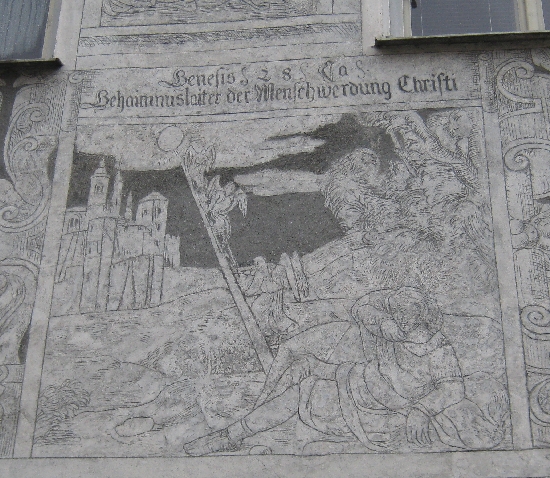
One building that particularly fascinated me was the one on the left in the picture above. It is covered with scenes from stories recorded in the Old Testament, together with the associated biblical reference.
It was still fairly grey and cloudy when we walked around the town in the afternoon which meant the light was not so good for taking detailed pictures of the individual illustrations. However, I was pleased with this one on the left, which illustrates the story of Jacob’s dream at Bethel, recorded in Genesis chapter 28, where he saw a ladder or stairway between earth and heaven with angels ascending and descending.
Slavonice was a place that Sybille & I very much enjoyed. Whilst is has visitors, it is a little more off the tourist track than Telc. Being so close to the Austrian border, German is often spoken and understood – a great help with our relatively limited Czech! However, it doesn’t suffer from the blight that affects so many towns and villages in the Czech Republic that border Austria or Germany – a proliferation of casinos and gambling places together with associated prostitution that I have described previously in this blog. There is just one Herna Bar, (bar with slot machines), and even that wasn’t open all the time.
The surrounding countryside consists of rolling wooded hills with many waymarked walking routes and cycleways. Certainly a place we plan to re-visit at some future date.

